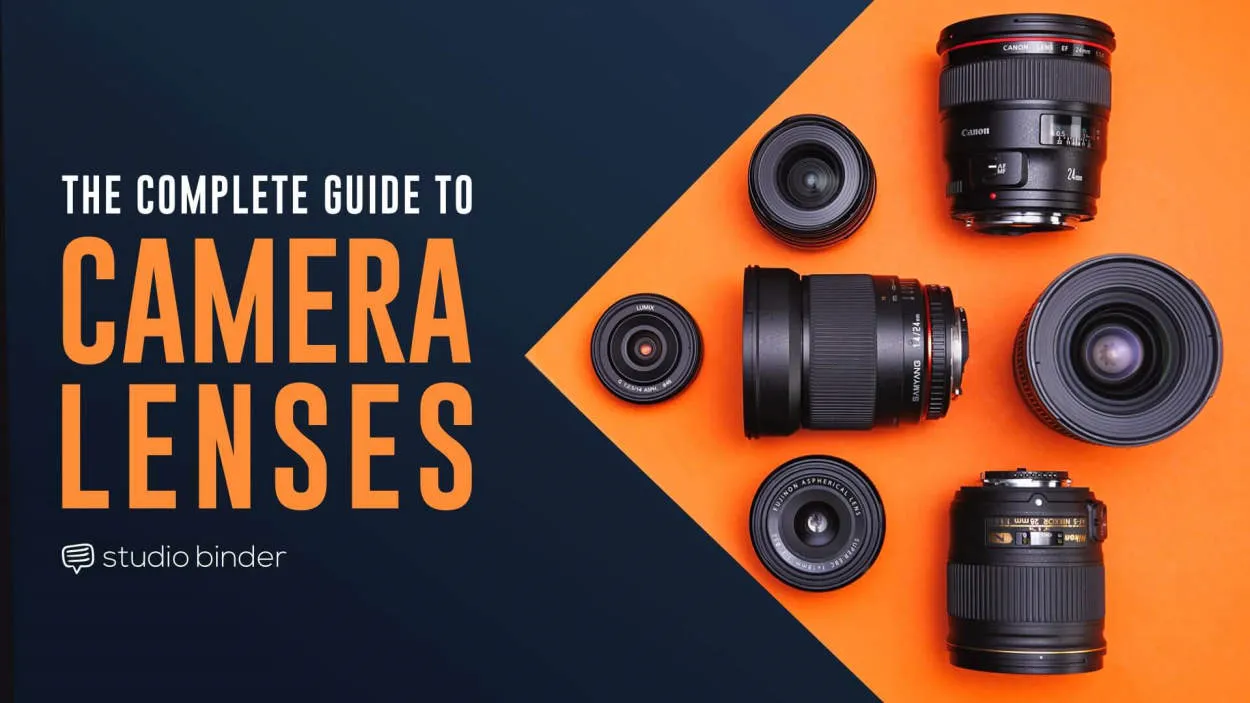Are you a photography enthusiast planning to purchase a new camera lens in the USA? Look no further! In this comprehensive buyer’s guide, we will provide you with all the essential knowledge you need to understand camera lenses – from focal length to aperture, to help you make an informed decision.
Prime Lenses: When Sharpness Matters
When it comes to capturing stunning and razor-sharp images, prime lenses are the go-to choice for many photographers. Unlike zoom lenses, which have a variable focal length, prime lenses have a fixed focal length. This restriction may seem limiting at first, but it’s actually one of their greatest advantages.
Prime lenses are designed to excel in providing exceptional image quality. By eliminating the need for a complex zoom mechanism, prime lenses can focus on optimizing optical performance. This results in sharper images with less distortion, greater contrast, and improved color accuracy.
One of the key reasons why sharpness matters is the ability to capture fine details. Whether you’re photographing landscapes, portraits, or still-life subjects, prime lenses allow you to capture each intricate element with breathtaking clarity. The absence of zooming flexibility forces photographers to think more creatively and find the optimal position to frame their shots, resulting in more thoughtful composition.
Furthermore, prime lenses tend to have larger maximum apertures compared to zoom lenses. This wider aperture allows for better low-light performance, increased background blur (also known as bokeh), and the flexibility to shoot at faster shutter speeds. As a result, prime lenses are highly valued by professionals and enthusiasts alike for their ability to produce stunning images, especially in challenging lighting conditions.
Although prime lenses require photographers to physically move closer or farther from the subject to adjust the composition, this limitation can be very rewarding. It encourages photographers to explore different angles, experiment with perspective, and ultimately develop their creativity and photographic skills.
In conclusion, prime lenses are a fantastic choice when maximized image sharpness is a top priority. Their ability to deliver outstanding optical performance, capture intricate details, and provide wider apertures makes them indispensable tools for photographers pursuing excellence in their craft. So, if you’re looking to elevate your photography to the next level, consider investing in prime lenses.
Zoom Lenses: Versatility at Your Fingertips
Zoom lenses are a crucial component of a photographer’s toolkit, offering unparalleled versatility when it comes to capturing stunning images. Whether you are an amateur or a professional, understanding how these lenses work and their benefits can greatly enhance your photography skills.
One of the key advantages of zoom lenses is their ability to change focal length, allowing you to zoom in and out without physically moving closer to or farther away from your subject. This feature is particularly useful in situations where you cannot reposition yourself easily, such as when photographing wildlife or sporting events.
Another benefit is the range of focal lengths offered by zoom lenses. They typically cover a wide spectrum, from wide-angle to telephoto, providing you with the flexibility to shoot various types of subjects, such as landscapes, portraits, or distant objects. Instead of carrying multiple prime lenses, a zoom lens can handle different scenarios effectively.
Zoom lenses also offer convenience and efficiency. With just a twist of the zoom ring, you can quickly adjust the framing of your shot to achieve the desired composition. This speed can be crucial, especially when photographing fast-moving subjects or in rapidly changing situations.
Additionally, modern zoom lenses are designed with advanced optical technologies, ensuring high image quality throughout the zoom range. While prime lenses may provide exceptional sharpness and low-light performance, zoom lenses have seen significant improvements in recent years, narrowing the gap between the two.
However, it is worth noting that zoom lenses often sacrifice some image quality and maximum aperture compared to their prime lens counterparts. Depending on your specific needs and shooting style, you may still prefer prime lenses for the utmost image quality in certain situations.
In conclusion, understanding the advantages and features of zoom lenses is essential for any photographer. Their versatility, convenience, and ability to adapt to different shooting scenarios make them an invaluable tool. So, whether you are a hobbyist or a seasoned professional, consider adding a zoom lens to your camera gear to take your photography to new heights.
Wide-Angle Lenses: Expanding Your Field of View
A wide-angle lens is an essential tool for photographers who want to capture a broader perspective and fit more into their frame. Whether you’re shooting landscapes, architecture, or group shots, understanding the capabilities of wide-angle lenses can greatly enhance your photography.
What are Wide-Angle Lenses?
Wide-angle lenses have a shorter focal length than standard lenses, allowing them to capture a wider field of view. They typically have a focal length of 24mm or less on a full-frame camera, but this may vary depending on your camera’s sensor size.
Benefits of Wide-Angle Lenses
Using a wide-angle lens can offer several advantages:
- Expanding the frame: Wide-angle lenses enable you to include more elements and details in your composition, making the scene feel vast and immersive.
- Creating a sense of depth: Wide-angle lenses exaggerate the distance between foreground and background elements, adding depth and dimension to your images.
- Distortion and perspective: Wide-angle lenses can create unique and creative distortions, especially when shooting subjects up close.
- Low-light capabilities: Some wide-angle lenses have larger apertures, allowing more light to enter the camera and improving performance in low-light situations.
Tips for Using Wide-Angle Lenses
Here are a few tips to get the most out of your wide-angle lens:
- Get close to your subject: Wide-angle lenses work best when you’re physically close to your subject, emphasizing its presence in the frame.
- Be mindful of distortions: Be aware that wide-angle lenses can distort straight lines and proportions, so pay attention to how your subjects appear in the final image.
- Use leading lines: Wide-angle lenses are great for emphasizing leading lines and drawing the viewer’s gaze into the image.
- Experiment with compositions: Don’t be afraid to explore different angles and compositions to make the most of the wide perspective.
Conclusion
Wide-angle lenses offer a unique perspective that can greatly enhance your photography. By understanding their capabilities and following a few tips, you can make the most of these lenses and capture stunning images with a wide field of view.
Telephoto Lenses: Getting Close to the Action
In the world of photography, one crucial aspect that can make or break a shot is the choice of the lens. When it comes to capturing distant subjects or getting up close to the action, telephoto lenses are the go-to option for photographers.
Telephoto lenses are specifically designed to provide magnification, enabling photographers to bring subjects that are far away closer to the camera. These lenses have a longer focal length than standard lenses, which allows for greater zoom capabilities and effective image stabilization.
One of the key advantages of telephoto lenses is their ability to compress the perspective, giving the impression of a closer proximity to the subject by flattening the depth of field. This effect is especially useful for landscape, wildlife, and sports photography where it is often not possible to get physically close to the subjects.
Telephoto lenses come in various focal lengths, ranging from moderate telephoto (around 70-200mm) to super telephoto (300mm and above). The choice of focal length depends on the specific requirements of the photographer. Moderate telephoto lenses are versatile and often used for portraiture, sports events, and nature photography. Super telephoto lenses, on the other hand, are popular among wildlife and bird photographers who need to capture distant subjects without compromising image quality.
It is important to note that telephoto lenses tend to be heavier and larger in size compared to standard lenses. This is due to the complex optical construction required to achieve high magnification. Therefore, it is crucial for photographers to consider the weight and portability factors when choosing a telephoto lens.
In conclusion, telephoto lenses are an essential tool for photographers who want to capture distant subjects or bring the action closer to their cameras. Understanding the capabilities and considerations of these lenses will greatly help photographers in choosing the right telephoto lens for their needs.
Conclusion
Understanding camera lenses is crucial for buyers in the USA. By familiarizing themselves with different types of lenses and their features, buyers can make informed decisions when purchasing photography equipment. Whether it’s a wide-angle lens for landscapes or a telephoto lens for capturing distant subjects, understanding the capabilities and limitations of each lens type is essential. So, take the time to research and test various lenses to ensure you choose the best lens for your specific photography needs.




